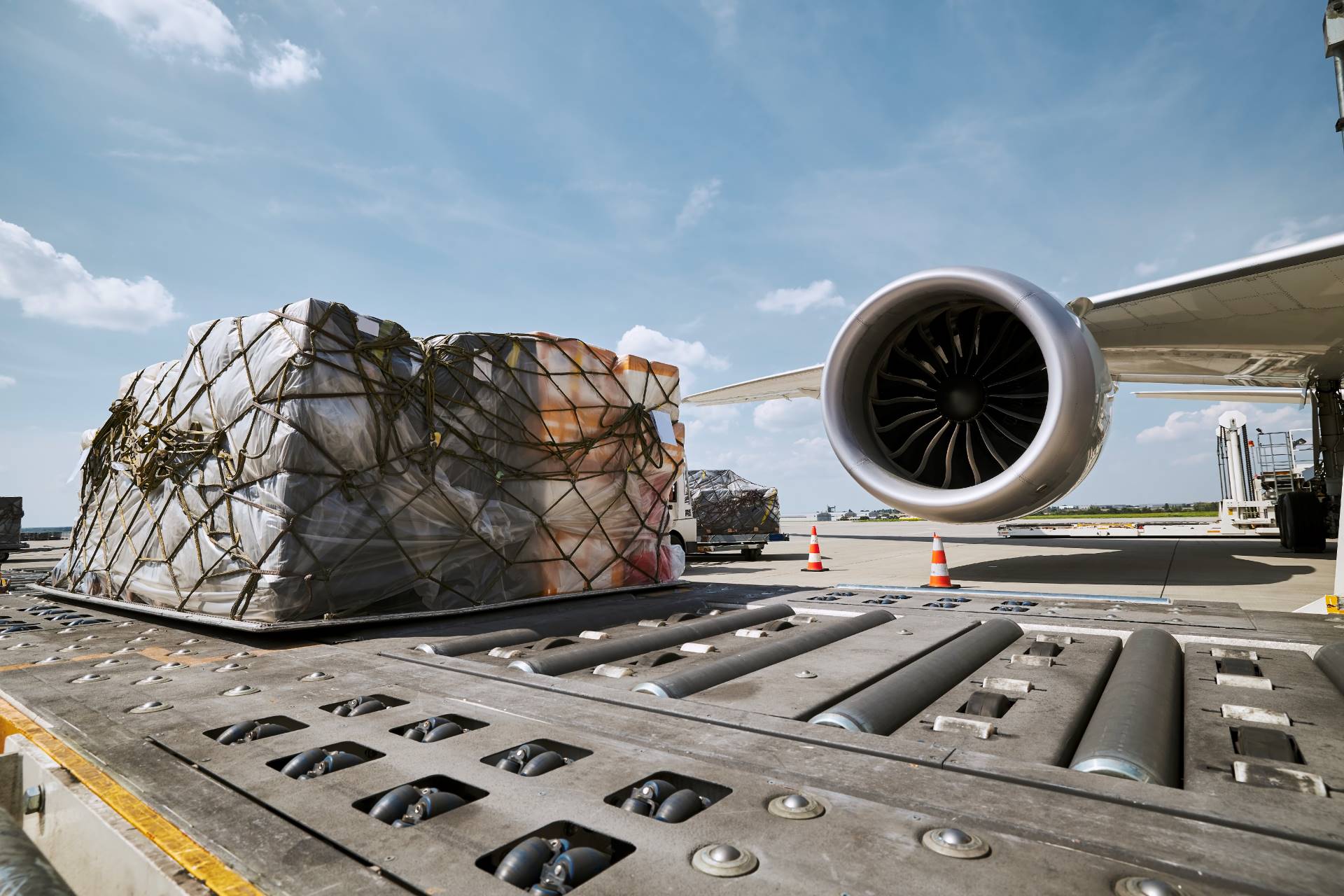Air freight Australia refers to the transportation of goods or cargo by air, utilizing dedicated aircraft and specialized services to move shipments quickly and efficiently across domestic and international routes.
FreightNet Vic plays a crucial role in global trade, offering fast and reliable transportation options for various industries.
Importance Of Air Freight Australia
Air freight Australia holds significant importance in Australia due to the country’s geographic location and its status as a major trading nation.
With vast distances between cities and the rest of the world, Air Freight Australia provides a vital link for time-sensitive cargo, perishable goods, high-value products, and international trade. FreightNet Vic can assist with a range of services as we have the industry experience and network to follow through with any air freight request.
FreightNet Vic also enables all businesses to access global markets, facilitates e-commerce growth, and supports various industries such as manufacturing, agriculture, and pharmaceuticals.
Overview of Air Freight Australia
The air freight industry in Australia is a dynamic and thriving sector that contributes to the country’s economic development.
It encompasses a wide range of services, including express shipments, perishable goods transportation, e-commerce logistics, and more.
Australia has a well-established network of airports, cargo terminals, and logistics infrastructure to support efficient Air Freight Australia operations.
To further explore more about these services, we will refer to our website www.freightnetvic.com.au which is a valuable resource for information related to air freight in Victoria and indeed Australia.
Air Freight Infrastructure In Australia
Air freight infrastructure in Australia refers to the physical facilities, airports, cargo terminals, and logistics networks that support the movement of goods by air.
It encompasses a range of elements that are essential for efficient and effective air freight operations, including airports, cargo terminals, ground transportation, and logistics facilities. FreightNet Vic can do all this and much more.
Airports – Air Freight Australia
Air Freight Australia also has several major airports that serve as key hubs for air freight operations. These airports are strategically located across the country and provide connections to both domestic and international destinations. FreightNet Vic has access to all and can facilitate the best possible outcomes.
Some of these major airports in Australia include Sydney Airport, Melbourne Airport, Brisbane Airport, Perth Airport, and Adelaide Airport. These airports have dedicated cargo terminals and aprons to handle the movement of cargo.
Cargo Terminals
Cargo terminals are specialized facilities within airports that handle the processing, storage, and sorting of air cargo.
They are equipped with various amenities and infrastructure to support efficient cargo operations, including warehousing space, cargo handling equipment, customs facilities, and security systems.
Cargo terminals are responsible for receiving, inspecting, sorting, and loading/unloading cargo onto aircraft.
Ground Transportation
Ground transportation is a critical component of air freight infrastructure. It involves the movement of cargo to and from airports, as well as the transportation of cargo between airports and other logistics facilities.
This includes trucking services, logistics hubs, and distribution centers that facilitate the seamless transfer of cargo.
Efficient ground transportation networks ensure the smooth flow of goods throughout the air freight supply chain.
Logistics Facilities
In addition to airports and cargo terminals, Australia has various logistics facilities that support air freight operations.
These include bonded warehouses, distribution centers, and freight forwarding companies. These facilities play a crucial role in the consolidation, storage, and distribution of air cargo.
They provide value-added services such as inventory management, order fulfillment, and customs clearance.
Technology and Systems
Air freight infrastructure in Australia includes advanced technology systems and processes that enhance efficiency and visibility.
This includes tracking and tracing systems, electronic data interchange (EDI), and cargo management software. FreightNet Vic has it’s own software package to facilitate all the necessary requirements.
These technologies enable real-time monitoring of shipments, efficient documentation processes, and improved communication between stakeholders.
Overall, air freight Australia is well-developed and geared towards supporting the movement of goods by air.
It comprises airports, cargo terminals, ground transportation networks, logistics facilities, and advanced technology systems.
This infrastructure enables the efficient and secure transportation of goods, contributing to Australia’s trade and economic growth.
International Air Freight Australia Services
Major International Routes Connecting Australia
Australia has direct air freight connections to key international hubs, facilitating trade and cargo movements between Australia and global markets.
Major international routes include:
Australia to Asia: Connecting to cities such as Hong Kong, Singapore, Shanghai, Tokyo, and Seoul.
Australia to Europe: Connecting to cities such as London, Frankfurt, Paris, and Amsterdam.
Australia to North America: Connecting to cities such as Los Angeles, San Francisco, New York, and Vancouver.
Australia to the Middle East: Connecting to cities such as Dubai, Doha, and Abu Dhabi.
Types Of Cargo Transported Internationally
Exports
Agricultural Products: This includes fresh produce, meat, dairy products, wine, and other food items.
Minerals and Resources: Australia is a major exporter of minerals such as iron ore, coal, gold, and natural gas.
Manufactured Goods: Automotive components, machinery, electronics, and other manufactured products are exported via air freight.
High-value Products: Luxury goods, pharmaceuticals, electronics, and valuable items are transported internationally by air.
Imports
Consumer Electronics: High-demand products like smartphones, laptops, tablets, and other electronic devices.
Fashion and Apparel: Clothing, accessories, and textiles are frequently imported via air freight.
Automotive Parts: Air freight plays a crucial role in the importation of automotive components for the automotive industry.
Perishable Goods: Imported perishable items such as fresh fruits, vegetables, seafood, and flowers.
International air freight services cater to the diverse needs of businesses engaged in global trade. They ensure efficient and timely transportation of goods, facilitate cross-border transactions, and support economic growth by enabling businesses to access international markets.
Challenges And Opportunities In Air Freight Australia
Challenges
Infrastructure Constraints: Limited infrastructure capacity, especially at major airports, can lead to congestion, delays, and operational inefficiencies.
Capacity Management: Balancing demand and capacity in air freight Australia can be challenging, especially during peak seasons or when facing sudden fluctuations in cargo volumes.
Environmental Impact: Air freight has a significant carbon footprint, and the industry faces pressure to reduce emissions and adopt sustainable practices.
Regulatory Compliance: Compliance with various international and domestic regulations, including customs procedures, security measures, and safety standards, can be complex and time-consuming.
Rising Costs: Increasing fuel prices, security requirements, and infrastructure expenses can impact the profitability of air freight operations.
Opportunities
E-commerce Growth: The rise of e-commerce presents significant opportunities for air freight, as online retailers and consumers increasingly demand fast and reliable delivery services.
Emerging Markets: Growing economies and trade opportunities in Asia, particularly China and Southeast Asia, provide avenues for expanding air freight services and tapping into new markets.
Technological Advancements: Innovations such as block chain, artificial intelligence, and automation offer opportunities to enhance operational efficiency, improve visibility, and streamline processes in air freight operations.
Sustainable Practices: Embracing sustainable technologies and practices can help reduce environmental impact and meet evolving consumer and regulatory expectations.
Collaboration and Partnerships: Collaborations among stakeholders, including airlines, airports, freight forwarders and government agencies, can drive industry-wide improvements, enhance efficiency, and address common challenges.
Future Outlook
Technological Advancements: Continued advancements in tracking systems, data analytics, and automation are expected to enhance supply chain visibility, optimize route planning, and improve overall operational efficiency in air freight.
Green Initiatives: The industry is likely to witness an increased focus on sustainable aviation fuels, energy-efficient aircraft, and carbon offset programs to mitigate the environmental impact of air freight.
Regulatory Changes: Ongoing regulatory developments, both domestically and internationally, may impact air freight operations, particularly in areas such as security, safety, customs procedures, and trade agreements.
Customer Expectations: As customer expectations evolve, air freight providers need to adapt and offer tailored solutions, such as real-time tracking, reliable delivery times, and value-added services to meet customer demands.
Resilience and Adaptability: The ability to quickly adapt to changing market conditions, disruptive events, and emerging trends will be crucial for Air Freight Australia companies to remain competitive and ensure business continuity.
Addressing challenges and capitalizing on opportunities will be key for the air freight industry in Australia to sustain growth, improve efficiency, and contribute to the country’s trade and economic development.
Conclusion – Air Freight Australia
Air freight Australia services play a crucial role in connecting businesses to domestic and international markets, facilitating trade and economic growth.
While the industry faces challenges such as infrastructure constraints, environmental impact, and regulatory compliance, there are also significant opportunities for growth, including e-commerce expansion, emerging markets, technological advancements, and sustainable practices.
By addressing challenges, embracing opportunities, and fostering collaboration, the air freight industry in Australia can continue to thrive and contribute to the country’s trade and economic development. Call FreightNet Vic ( Freight Companies Melbourne ) today for a no obligation quote or consultation. Visit our facebook page for more updates.

